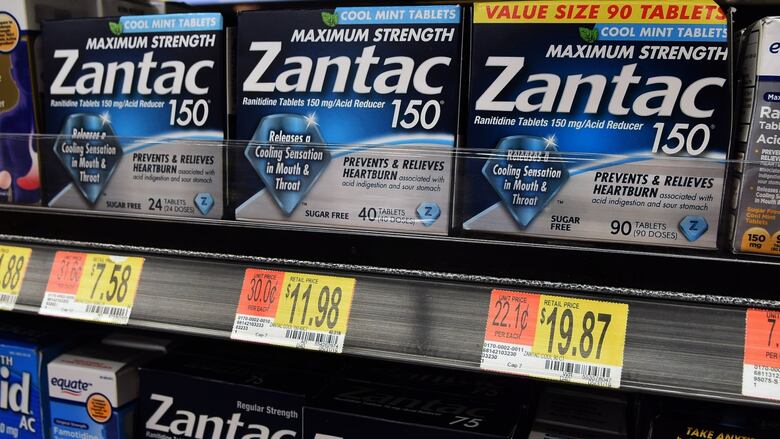The Zantac lawsuit is one of the most significant pharmaceutical litigation cases in recent history. Originating from concerns about a common heartburn medication, it has grown into a complex web of legal battles involving multiple stakeholders. If you’re curious about the details behind this lawsuit and its implications, you’re in the right place. We’re your guide through the essential facets of the Zantac legal proceedings.
Is There a Lawsuit Against Zantac?
Yes, a substantial lawsuit exists against the manufacturers of Zantac, known scientifically as ranitidine. This legal action stems from alarming findings that certain batches of Zantac contained a contaminant called N-nitrosodimethylamine (NDMA). NDMA is classified as a probable human carcinogen, meaning it could lead to increased cancer risk if ingested over time.
This revelation sparked a cascade of lawsuits against the drug’s manufacturers, including GlaxoSmithKline (GSK), Sanofi, Pfizer, Boehringer Ingelheim, and Chattem Inc. Each of these companies is accused of failing to adequately warn consumers and healthcare professionals about the potential dangers lurking in Zantac.
What is the Zantac Lawsuit About?
The core of the Zantac lawsuit revolves around allegations that the drug was contaminated, yet marketed and sold without sufficient warnings about its potential hazards. Lawsuits assert that the manufacturers were negligent in various areas.
These include not thoroughly testing the drug, inadequate marketing practices, and defects in the drug’s design that could lead to the formation of NDMA. The allegations further claim that these lapses contributed to consumers developing serious health conditions, including several types of cancer such as bladder, liver, stomach, and colorectal cancer, among others.
Zantac Overview
Zantac was introduced in the 1980s by GlaxoSmithKline and quickly became a go-to medication for heartburn and acid reflux. Available in both prescription and over-the-counter forms, it blocks excessive stomach acid, providing relief to millions globally. However, the drug’s reputation took a hit with the discovery of NDMA contamination. NDMA can form when ranitidine is stored improperly or metabolized in the human body, leading to potential health risks that users were not made aware of.
Legal Proceedings and Current Status
The legal proceedings against Zantac’s manufacturers are vast and complicated. Most of the lawsuits have been consolidated into multidistrict litigation (MDL) to streamline the process. This MDL, known as MDL 2924, is handle in a federal court, although cases proceed in several state courts, including those in California, Delaware, and Illinois.
As of now, some companies have reached settlements. GlaxoSmithKline, for instance, reached a settlement agreement in October 2024 to pay up to $2.2 billion, resolving approximately 80,000 cases. Similarly, Pfizer and Sanofi have agreed to settle thousands of cases. With over 10,000 lawsuits settled by Pfizer and 4,000 by Sanofi, many other cases are still pending, and new suits are filed as awareness grows. The litigation continues to evolve, reflecting the complexities of the pharmaceutical industry and legal accountability.
Who Filed the Lawsuit?
The plaintiffs in these lawsuits are a diverse group, typically U.S. citizens who used brand-name Zantac over extended periods between 1983 and 2019. They’ve been diagnosed with specific cancers such as bladder, liver, or stomach cancer, and other conditions linked to NDMA exposure. These individuals come armed with substantial evidence, including medical records, proof of Zantac usage, and expert testimonies. Their collective goal is to seek compensation for the damages incurred due to the manufacturers’ alleged negligence.
Additionally, a whistleblower lawsuit by the laboratory Valisure has brought more allegations to light. Valisure claims that GSK concealed the link between ranitidine and NDMA for decades, thus violating the False Claims Act on federal and state levels. This lawsuit seeks damages against GSK for its supposed deceptive practices.
Impact on Zantac
The ramifications of these lawsuits on Zantac and its manufacturers are immense. The drug is no longer available for sale, as manufacturers voluntarily withdrew it from the market amid growing safety concerns.
This withdrawal marked a significant setback for these companies, impacting their financial standings and reputations. Furthermore, healthcare providers and consumers have become more vigilant about medication safety, scrutinizing the long-term impacts of frequently used drugs. This heightened awareness has fueled conversations about regulatory processes and oversight for pharmaceuticals.
What Will Happen Next?
As the lawsuits progress, several key steps occur. Currently, cases enter discovery phases where evidence is exchanged between the parties involved. Settlements continue to be negotiated, with some cases moving to trial if an agreement cannot be reached. The ongoing trials, such as those for colorectal and prostate cancer lawsuits, will eventually reach conclusions. Outcomes of these trials will likely influence future legal strategies and settlements. For now, individuals affected by Zantac await justice, looking to see how these legal battles unfold.
With the litigation ongoing, it’s crucial to keep an eye on future developments. The outcomes of these cases could reshape how pharmaceutical companies approach drug safety and patient communication. Stakeholders, including regulators, consumers, and healthcare providers, eagerly anticipate resolutions that may lead to more stringent industry practices and oversight.
Conclusion
The Zantac lawsuits represent a pivotal moment in pharmaceutical history. They underscore the importance of diligent testing, clear communication, and consumer safety. Thousands of individuals have stepped forward, armed with evidence, seeking compensation for the harm they’ve suffered. As proceedings continue, these cases provide critical insights into the legal responsibilities of pharmaceutical companies. They remind us all of the potential risks hidden within common medications, urging us to remain informed and vigilant.
For more updates and insights, make sure to visit Wise Business Mag. Stay informed about developments in this and similar cases, as we continue to navigate these complex waters.
By understanding the intricacies of the Zantac lawsuits, we can better appreciate the intricate relationship between medication, manufacturers, and patients. As these legal proceedings proceed, they will inevitably leave a lasting impact on the pharmaceutical industry, shaping its future in the years to come.

